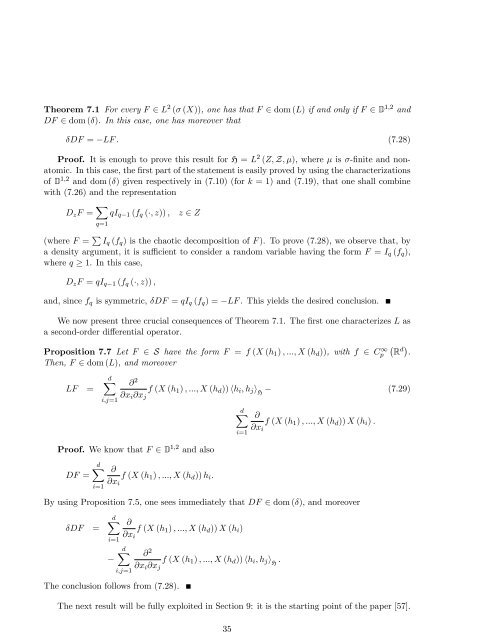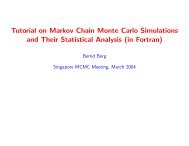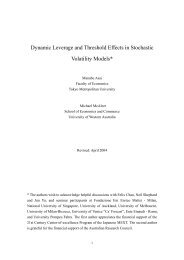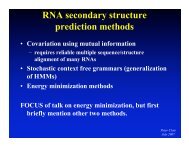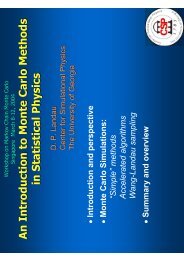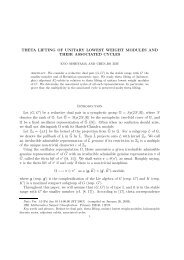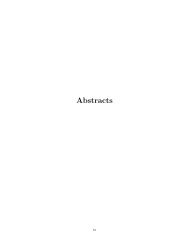Stein's method, Malliavin calculus and infinite-dimensional Gaussian
Stein's method, Malliavin calculus and infinite-dimensional Gaussian
Stein's method, Malliavin calculus and infinite-dimensional Gaussian
Create successful ePaper yourself
Turn your PDF publications into a flip-book with our unique Google optimized e-Paper software.
Theorem 7.1 For every F 2 L 2 ( (X)), one has that F 2 dom (L) if <strong>and</strong> only if F 2 D 1;2 <strong>and</strong><br />
DF 2 dom (). In this case, one has moreover that<br />
DF = LF . (7.28)<br />
Proof. It is enough to prove this result for H = L 2 (Z; Z; ), where is -…nite <strong>and</strong> nonatomic.<br />
In this case, the …rst part of the statement is easily proved by using the characterizations<br />
of D 1;2 <strong>and</strong> dom () given respectively in (7.10) (for k = 1) <strong>and</strong> (7.19), that one shall combine<br />
with (7.26) <strong>and</strong> the representation<br />
D z F = X q=1<br />
qI q 1 (f q (; z)) , z 2 Z<br />
(where F = P I q (f q ) is the chaotic decomposition of F ). To prove (7.28), we observe that, by<br />
a density argument, it is su¢ cient to consider a r<strong>and</strong>om variable having the form F = I q (f q ),<br />
where q 1. In this case,<br />
D z F = qI q 1 (f q (; z)) ;<br />
<strong>and</strong>, since f q is symmetric, DF = qI q (f q ) =<br />
LF . This yields the desired conclusion.<br />
We now present three crucial consequences of Theorem 7.1. The …rst one characterizes L as<br />
a second-order di¤erential operator.<br />
Proposition 7.7 Let F 2 S have the form F = f (X (h 1 ) ; :::; X (h d )), with f 2 C 1 p R d .<br />
Then, F 2 dom (L), <strong>and</strong> moreover<br />
LF =<br />
dX<br />
i;j=1<br />
@ 2<br />
@x i @x j<br />
f (X (h 1 ) ; :::; X (h d )) hh i ; h j i H<br />
(7.29)<br />
dX<br />
i=1<br />
@<br />
@x i<br />
f (X (h 1 ) ; :::; X (h d )) X (h i ) .<br />
Proof. We know that F 2 D 1;2 <strong>and</strong> also<br />
DF =<br />
dX<br />
i=1<br />
@<br />
@x i<br />
f (X (h 1 ) ; :::; X (h d )) h i .<br />
By using Proposition 7.5, one sees immediately that DF 2 dom (), <strong>and</strong> moreover<br />
DF =<br />
dX<br />
i=1<br />
@<br />
@x i<br />
f (X (h 1 ) ; :::; X (h d )) X (h i )<br />
dX<br />
i;j=1<br />
@ 2<br />
@x i @x j<br />
f (X (h 1 ) ; :::; X (h d )) hh i ; h j i H<br />
.<br />
The conclusion follows from (7.28).<br />
The next result will be fully exploited in Section 9: it is the starting point of the paper [57].<br />
35


